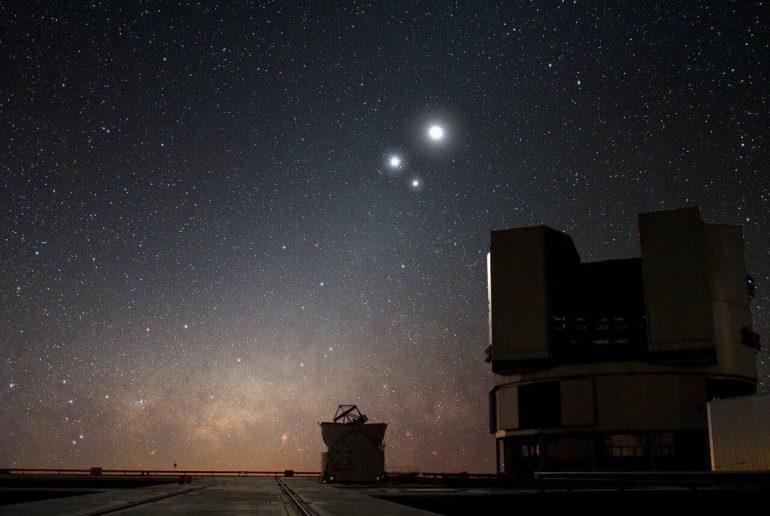Venus and Jupiter along with the Moon over ESO’s Very Large Telescope (VLT) observatory at Paranal, … [+]
Each Monday I pick out the northern hemisphere’s celestial highlights (mid-northern latitudes) for the week ahead, but be sure to check my main feed for more in-depth articles on stargazing, astronomy, eclipses and more.
What To Watch For In The Night Sky This Week: December 21–27, 2020
This week begins with December solstice—the official start of the astronomical season of winter in the northern hemisphere. However, it’s most notable not for the tilt of Earth’s North Pole away from the Sun, but for something that hasn’t happened for almost 800 years—an easily visible super-close conjunction or appulse of the Solar System’s two giant planets Jupiter and Saturn.
Although Monday is the “best” night to watch them shine as one as they take a pre-Christmas kiss, anyone tracking Jupiter and Saturn as darkness falls may get rewarded with a “fireball” from the Ursid meteor shower, which peaks on Tuesday.
Meanwhile, anyone with a new telescope for Christmas should point it at Venus and Mars, which both do something significant this week.
With the nights now as long as they ever get in the northern hemisphere we’re surely into the “golden month” for stargazing.
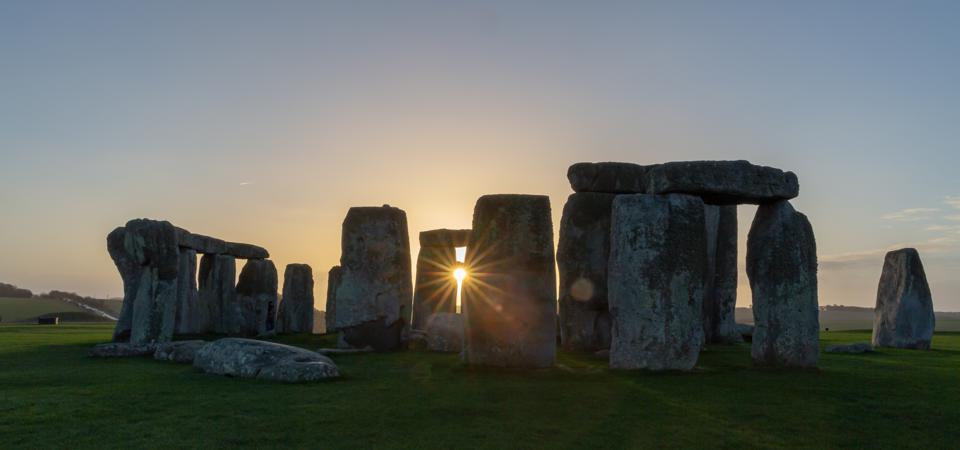
December’s solstice is the official start of the astronomical season of winter in the northern … [+]
Monday, December 21, 2020: December’s Solstice and a ‘Great Solstice Conjunction’
December’s Solstice
Today at 10:03 Universal Time is the Solstice, a global moment when the Earth’s axis is at its maximum tilt away from the Sun. In the northern hemisphere it means the shortest day of the year and the longest night—the beginning of astronomical season of winter. Up in the Arctic Circle the Sun will not rise.
Meanwhile, in Antarctica, the midnight Sun will shine all day as the southern hemisphere sees its longest days and shortest nights—and the start of the astronomical season of summer.
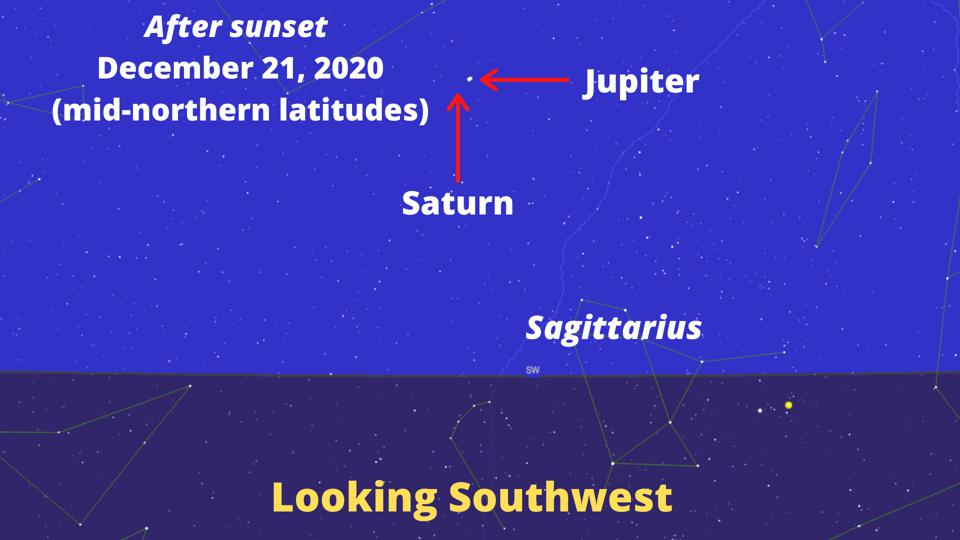
How to see Jupiter and Saturn in a “great conjunction.”
‘Great Solstice Conjunction’
Planets occasionally pass each other in the night sky, but rarely this close. Faster-moving Jupiter laps Saturn every 20 years, but not since 1623 has there been a “great conjunction” or “appulse” this close. Even more impressively, not since 1226 has such a sight been easily observable and in a post-sunset sky—almost 800 years ago.
To see the two planets just 0.1º apart have a look to the southwest immediately after sunset. Don’t waste any time—they’ll be sinking towards the horizon. Why does it happen on the exact date of the solstice? That’s essentially a celestial coincidence, though an inevitable one given the long-term celestial mechanics at play. The moment of conjunction is at 13:24 Universal Time.
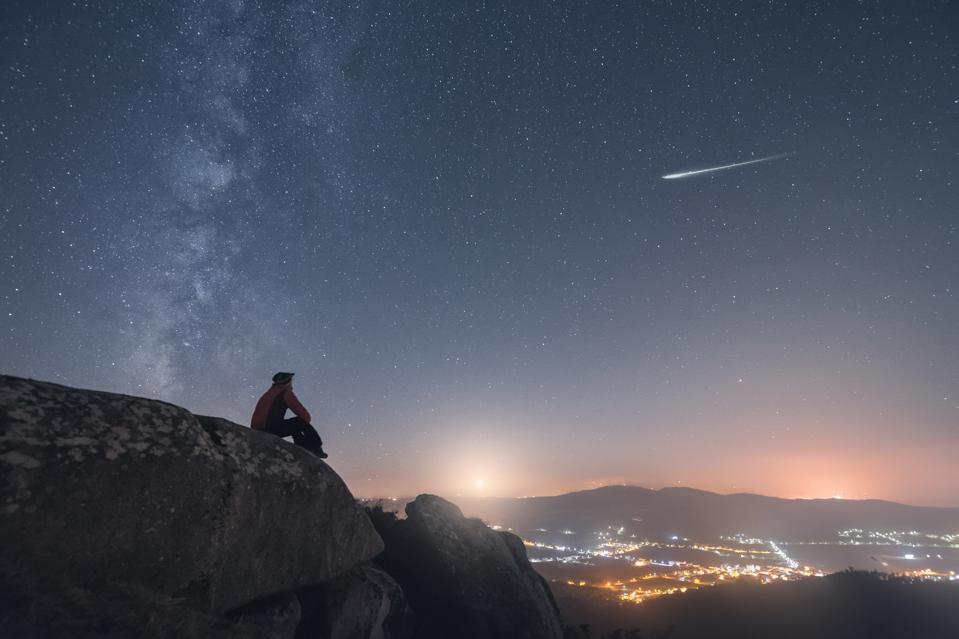
You might get lucky with a “shooting star” this week as the Ursid meteor shower peaks.
Monday/Tuesday, December 21/22, 2020: Ursid meteor shower
No sooner has one of the planet-spotting highlights of all of our lives come and gone than the Ursid meteor shower peaks. In truth this is not a major sky event, though its 5-10 “shooting stars” may be of interest if you’ve allowed your post-sunset planet-spotting to turn in full-blown night of stargazing.
The Ursids runs from December 17-25 each year, in 2020 peaking just after midnight in the early hours of Tuesday, December 22. The skies should be reasonably dark, with any “shooting stars” appearing to emanate from the northern sky.
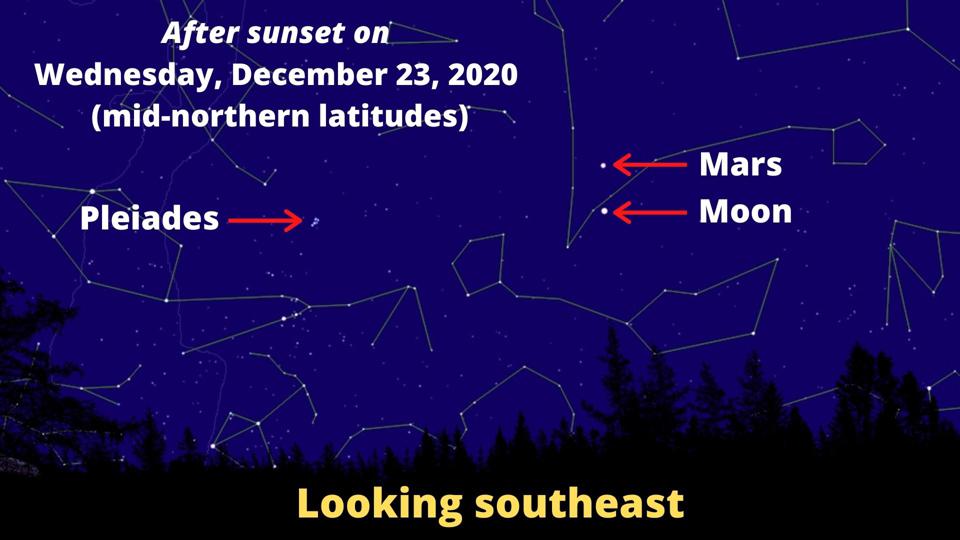
How to see the Moon and Mars sparkle together on December 23, 2020.
Wednesday, December 23, 2020: Venus close to Antares and the Moon close to Mars
If you’re up before sunrise, take a look to the eastern sky and you’ll see bright planet Venus shining about 5.5° from red supergiant star Antares in the constellation of Scorpius just above the eastern horizon.
Later today after dark, you’ll be able to see a 68%-illuminated Moon 5.6° underneath Mars and the gorgeous Pleiades star cluster to the left in the east (see above skychart). Look southeast after sunset.
Wishing you clear skies and wide eyes.

Devoted web advocate. Bacon scholar. Internet lover. Passionate twitteraholic. Unable to type with boxing gloves on. Lifelong beer fanatic.

